Posts Tagged ‘Elie Wiesel’
Saturday, October 2nd, 2021
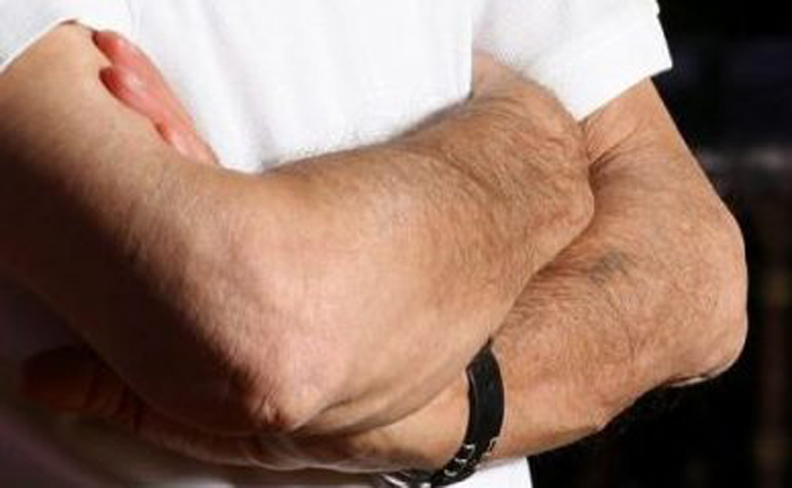
Close-up of Wiesel’s arms from the photograph taken in 2006 by Eyal Toueg, published after Elie Wiesel’s death.
By Carolyn Yeager
It’s been five years now since Elie Wiesel died and his body was buried in a plain pine coffin.
This website premiered in July 2010 with the question: “Where’s the tattoo?” No one had ever seen it, yet Wiesel claimed to have it as proof he was an inmate at Auschwitz in 1944. Please refer to “Where is Elie’s tattoo?” before you read further.
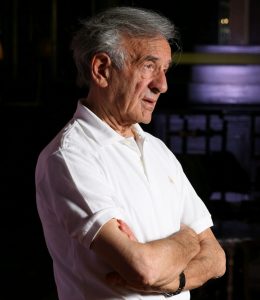
The full image as published in Haaretz a week after Wiesel’s death in July 2016.
In seven years, this site had learned and published a great deal [over 130 articles] about Elie Wiesel’s life events and the incredible trail of lies he left in his wake. But we had still not seen the tattoo! That is, until the above photo was published by Haaretz, a leading Israeli newspaper, a week after his death. Behold! the distinctive appearance of a bluish smudge on ElieWiesel’s bare left forearm. The photo, said to be taken in Israel in 2006 by Eyal Toueg, is high-resolution and gives every appearance of being an authentic representation of Wiesel at that time—in other words, not photo-shopped. Haaretz is a generally reliable source with a reputation to protect. Since then, I’ve seen no further mention of the photograph.
My takeaway on what we see there is that it is clearly NOT the number A-7713, which is what Wiesel claimed all his adult life he had. He lied—and got away with it. Please see my articles “How Wiesel’s ‘tattoo’ looks from where I’m sitting” and “New (old) pictures come to light in wake of Elie Wiesel’s death” for my impressions in 2016.
Five years later I can say with confidence that whatever it was that may have been on his arm and appears to have possibly been removed was never the number A-7713. (Why? Because it it were A-7713, it would not have been removed while he was still claiming it was there.)
“Appears to have been” is the key here because we’re dealing solely with appearances. We have no statements from Wiesel’s intimates and allies about the tattoo. When it comes to questions about that, they are mute. We also have other images of Wiesel’s bare arm with nothing appearing there or with what could be a faint trace of a number (see below). However, no matter how much these “faint traces” are enlarged, no number can be made out—it is seen to be only a ‘shadow’ on the arm.
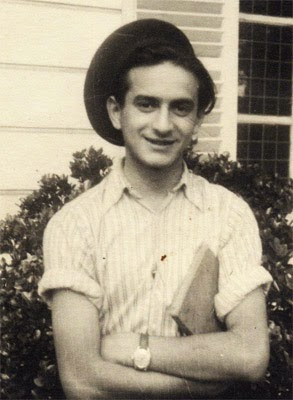
Elie Wiesel in Ambloy, France in 1945 with mark on arm that disappears into nothing when enlarged.
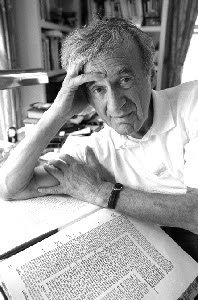
This photo taken on the same day as the one above in 2006. Wiesel is wearing the same shirt and his wristwatch is facing down. But the faint mark on his arm doesn’t match the image above.
The explanation for these last two photos, one taken in 1945 and the other on the same day in 2006 he was wearing the white knit shirt, is that they were both uploaded to the Internet by Loupi Smith and no one else! Neither of these images are found in the U.S. Holocaust Memorial Museum collection, the Auschwitz-Birkenau Museum, or even at Yad Vashem. If they were proof that Elie had a tattoo, wouldn’t they be there?
Loupi Smith is a notorious French Jew who’s long been engaged in battle with revisionists (known as negationists in France), most especially with the honorable Vincent Reynouard. It’s most likely that Smith took images of Wiesel without any mark on the arm and applied the desired effect directly to the photographic print he had obtained. He then uploaded these to the Internet and waited for them to be found, or had friends/agents who “found” them.
As to why Haaretz decided to publish this photo right after Wiesel’s death, Haaretz will have to answer that. We are not mind-readers and have to depend largely on honesty from the parties involved, but honesty has never been forthcoming from Holocaust advocates. For example, see my articles about AP reporter Verena Dobnik who in Nov. 2012 wrote that Wiesel showed her his Auschwitz tattoo by “pulling back his left jacket sleeve” during an interview she was conducting with him. Of course, she didn’t and never would say what it was, just that it was an “Auschwitz tattoo.” See “AP reporter doesn’t reply to questions about seeing tattoo on Elie Wiesel’s arm” and “AP stonewalling legitimate questions about reporter seeing Elie Wiesel’s tattoo.” Nothing unusual here, though—it’s the usual behavior from all media and government sources when it comes to anything “holocaust.”
FINAL CONCLUSION: Elie Wiesel lied about his tattoo. All the feeble explanations/excuses put forward by his supporters and fans for why he refused to show it are inadequate in the face of the proofs we’ve assembled. Wiesel stole the identity of Lazar Wiesel, who was 13 years his senior and who was recorded as being an inmate at Auschwitz-Birkenau (tattooed with A-7713) and at Buchenwald camps in 1944-45. No records for a 16 or 17 year old Eliezer Wiesel born in 1928 exist at either camp.
If he lied about the tattoo, it is certainly believable he lied about being in Auschwitz and Buchenwald. In support of that possibility are the facts that his stories and descriptions don’t match the well-known reality of the camps; his timelines are off; people who were known to be there at the same time he was, even housed in the same buildings, never mentioned seeing him—either before or after he became famous. All this and more is documented at this site.
Elie Wiesel’s “Idea”
Equally important to Elie’s lack of the claimed tattoo is, in my opinion, his admitted twisting of what it means to be a witness. There are two parts to his approach: 1) What happened may not be “true” and what is the “truth” may not have actually happened, and 2) Every Jew should be a witness to the Holocaust regardless of whether they actually participated. Part 2 is made possible by part 1.
Wiesel announced his willingness to deceive in several of his books, and in interviews. Even though he told us exactly what he was doing, it seems no one wanted to take it seriously. The sainthood of Elie Wiesel was too appealing.
 Of his several statements, covered in my article “Elie admits his true stories never happened,” I think the most compelling was in a 1970 interview with Gilles Laponge, published in the book Elie Wiesel: Conversations (2002). You can find the interview online HERE at Google Books. Wiesel said:
Of his several statements, covered in my article “Elie admits his true stories never happened,” I think the most compelling was in a 1970 interview with Gilles Laponge, published in the book Elie Wiesel: Conversations (2002). You can find the interview online HERE at Google Books. Wiesel said:
In [my] book “One Generation After” there is a sentence which perhaps explains my idea: “Certain events happen, but they are not true. Others, on the other hand, are, but they never happen.” So! I undergo certain events and, starting from my experience, I describe incidents which may or may not have happened, but which are true. I do believe that it is very important that there be witnesses always and everywhere.
[…]
The people of my generation are, in various ways, all survivors. We must prevent the Holocaust from being erased from the memory of the world.
He’s telling us he’s writing fiction “based on his experience” but insisting it’s ‘true’, and even 100% true. What is the basis of his experience? Being a Jew. A Zionist Jew. Wiesel’s life history of being a Hasidic Jew is primary in his experience, according to his own words. This means he accepts the following and has said so:
- Belief taking precedence over Reality;
- Religion over History;
- Storytelling over fact-finding;
- Hearsay over first-person evidence; and
- Feelings over Justice.
In other words, it’s Ashkenazi Jewish mysticism vs European Christian Law. It’s interesting to note that at Boston University, where Wiesel had a cushy “professorship” for many years, he taught in the Religion and Philosophy Departments, not the History Department. See my article on BU here.
A little further in the interview Wiesel continues with the cloudy language:
“I believe in a way we are all culpable even though the guilt of the torturer is not that of the witness or the survivor. Do not see in my words the least resignation to evil. […] No, evil is absurd the same way the Holocaust is absurd. I remain convinced that this event, the most significant in history, might very well not have happened.”
Everyone can be a survivor, with the important job of preventing the memory of the Holocaust from being lost or “erased.” For this purpose, apparently everything and anything goes. Making things up to be far worse than they actually were is nothing unusual. It’s considered necessary to reinforce the memory.
When Wiesel claims that “every word” in Night “is true,” he’s using a definition of “truth” different from the standard dictionary meaning. When testifying in a court of law, the lawyers and judges should first establish what is his understanding of truth, but they never have.
On this basis, Wiesel received award after award from prestigious Gentile groups, all the way up to the Nobel Peace Prize. Wiesel has indeed conned the world.
We pronounce Elie Wiesel a false witness from beginning to end.
2 Comments
Category Featured | Tags: Tags: Auschwitz tattoos, Elie Wiesel, false witness, Holocaust fraud,
Social Networks: Facebook, Twitter, Google Bookmarks, del.icio.us, StumbleUpon, Digg, Reddit, Posterous.
Sunday, June 11th, 2017
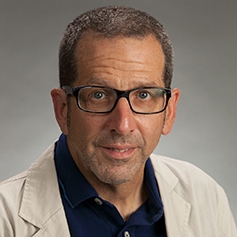
Alan Astro PhD, Trinity University
By Carolyn Yeager
I happened upon this video and recognized my own text of Yiddish-to-French-to-English translation being used by this professor at a Catholic university in San Antonio TX. Though a native of Brooklyn, Alan Astro says he has been at Trinity University for over 25 years. His field is modern languages and literatures; one of the subjects he teaches is Yiddish culture.
His lecture, titled “Christianity and the Holocaust in Elie Wiesel’s Night” was filmed by St. Francis College and at the 6min59sec mark, he shows text from my very important 2012 article “Night #1 and Night #2—What Changes were Made and Why, Part One.” So you never know who is reading this site – a lot of people and all people who have a professional interest in Elie Wiesel.
At 6:59, Astro shows text translated by Kladderadatsch for this web site, which he calls “Where’s the tatoo?” (sic). He says that even though Yiddish was not known very well even in the Jewish world … “Holocaust deniers somehow get their hands on the Yiddish and manage to get it translated. Here is one holocaust denier or minimizer on the web who makes a whole big deal about the fact that in the Yiddish and French and English original translations Wiesel “is not quite 15” when he is arrested and sent to Auschwitz, whereas he is 15 in the newest edition and this is considered to be something that somehow questions the veracity of the whole historical knowledge of the Holocaust. But that’s another issue all together. But it does show you that things can very often have strange consequences.” (He goes quickly to something else at 8:10. So Astro has my text on the screen for one minute, 11 seconds, enough time to read it all.
This is the segment he used:
3. Not yet fifteen … or fifteen?
UdV Page 63 : Yingl, vi alt bistu? fregt mir a heftling. Zeyn pnym iz geven in der fintster, ober zeyn kol iz geven a mids, a varems. Nokh nisht keyn 15 yor, hob ikh geentfert.
“Kid, how old are you?” a prisoner asked me. His face was in darkness, but his voice was tired and warm. “Not yet 15 years,” I answered.
LN Page 54: Hé, le gosse, quel âge as-tu? C’était un détenu qui m’interrogeait. Je ne voyais pas son visage, mais sa voix était lasse et chaude. “Pas encore quinze ans.” / Not yet 15 years.
SR Page 39: “Here, kid, how old are you?” It was one of the prisoners who asked me this. I could not see his face, but his voice was tense and weary. “I’m not quite fifteen yet.”
MW Page 30: “Hey, kid, how old are you?” The man interrogating me was an inmate. I could not see his face, but his voice was weary and warm. “Fifteen”
This very important passage was discussed above. I think the reader would agree that “not yet 15″ can mean even farther from the age of 15 than “not quite fifteen.” What is clear is that Marion Wiesel has changed the author’s original words to fit them to her husband’s age in Spring 1944.
Astro dismisses this important observation with the misrepresentation (in boldface above) that the example is intended to negate the entire holocaust story. No, it isn’t; obviously it questions the veracity of Elie Wiesel’s truthfulness in “Night” since this scene took place in April or May, and the real Wiesel’s 16th birthday was coming up on September 28, 1944. Thus Wiesel was not 14 in Spring ’44, but had already been 15 for at least 7 months. Astro is not interested in telling that to his audience or pursuing it himself. He is a professor of languages and literature, but not an expert on Elie Wiesel or the Holocaust. Far, far from it.
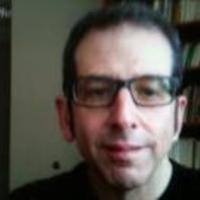
Another photo of Professor Alan Astro.
At 19:33, hear him pronounce Wiesel’s name as weasel (as I say it) and then quickly correct himself to the affectation Wie-zell that he used throughout the talk. This indicates that ‘weasel’ is his default way of pronouncing the name, or the way he first learned it.
At right is another photo of Professor Astro I found online that gives what might be a truer look at the man.
8 Comments
Category Featured | Tags: Tags: Elie Wiesel, Naomi Siedman, Night, Un di Velt Hot Gesvign,
Social Networks: Facebook, Twitter, Google Bookmarks, del.icio.us, StumbleUpon, Digg, Reddit, Posterous.
Friday, July 15th, 2016

Enlarged close-up of Elie Wiesel’s arms in a 2006 photograph by Eyal Toueg, first published in Haaretz (see previous article).
by Carolyn Yeager
copyright 2016 Carolyn Yeager
It’s pretty pathetic to be confronted with a picture like the above, and expected to acknowledge that it is Elie Wiesel’s Auschwitz tattoo that I have been asking to see for six years now. Once again, the best suggestion I have for magnifying it is to click on it to get the image page, then hit the plus key up to 8 times while holding down the Ctrl key. The image stays sharp while being greatly enlarged. What do you see? I invite all the amateur, and maybe professional sleuths out there to do their thing.
Wiesel has been hiding this faded-out, so-far-undecipherable spot on his arm for 70 years, and now that he’s safely buried and completely inaccessible, Haaretz, the Israeli newspaper that broke the story of Wiesel’s death, is beginning to reveal that arm. At least, that’s how it looks from where I’m sitting.
To the naked eye, it appears to be a bruise on the arm. Upon magnification, we can barely make out what appear to be numbers, but it’s not at all clear what numbers they are. I think I see a couple but I’m not going to reveal what they are because I want a better image – and think we all deserve one. The dark and light lines made by his arm hair create a confused mess, visually. What we need are more high-resolution photographs like this one, preferably with a straight-on view of the arm. The photographer Eyal Toueg must have taken many shots on this day in 2006 and he would have all the negatives. It is his responsibility to publish them all, every one that shows Wiesel’s left arm, but he is probably Israeli and is under the dictate of higher ups. Someone else may have bought all the negatives. Maybe Haaretz owns them.
As it is, we are left with many questions – such as, why has Wiesel refused to show his supposed faded tattoo over the years? Is it because it’s unreadable? If he revealed it, the public would question it – or at least sceptics would – and he was not prepared to answer questions. Probably, if there were journalists who took a genuine unflinching investigative approach, he would have been forced to discuss it, but none did. The efforts of Jean Robin of Enquete & Debat website to encourage such an investigation show conclusively that lack of journalistic willingness.
Has it been kept hidden because it is not A-7713? Could that be why whatever was there has been defaced or somehow unnaturally/synthetically faded or smeared? I cannot find any example of an Auschwitz tattoo that looks like his does.
Is it because it is something he put on his arm himself when he was a youth in France? In this 1945 b&w photograph (below) taken at the French orphanage for Jewish boys we see what looks like an Auschwitz tattoo, albeit a tiny one, on Wiesel’s arm in the same place we see the dark spot in the 2006 photo.

Elie Wiesel in summer 1945 in France – 16 going on 17 years of age.
The ready conclusion is that it’s his Auschwitz tattoo A-7713. But we can’t make it out at all! It’s already faint in 1945 and when I magnify it, no part of it is recognizable.
It’s also interesting that this photograph was posted on the Internet by French Jew Loupi Smith, but it doesn’t seem to be in the US Holocaust Memorial Museum online collection (where it is hopeless to try to view their Wiesel photo collection, anyway; they obviously don’t want you to see it). Nor is it in the Yad Vashem photo collection under Elie Wiesel – in fact, they have only 3 photographs with Wiesel in them – all the rest are aerial views of Auschwitz-Birkenau! Really weird. I think this decision to withhold pictures of Wiesel can only have come from Wiesel himself. In my opinion, though, the above is definitely a photo of Elie Wiesel in 1945 in France.
Our next pictures are these two, which show the same mark on the arm in the same place, but both are still completely unreadable as numbers. I assume these pics are from the same 2006 photo shoot that produced our newest picture, which is a much better high-resolution image. We can see sharp detail, but the “tattoo” is still not decipherable. It’s a really bad “tattoo!” The problem does seem to be with the “tattoo,” not the photograph. It is just very faint.
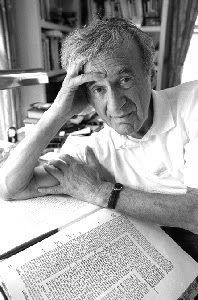
When this 2006 image is magnified, the possible “tattoo” is seen only as a darker spot, not recognizable as a number.
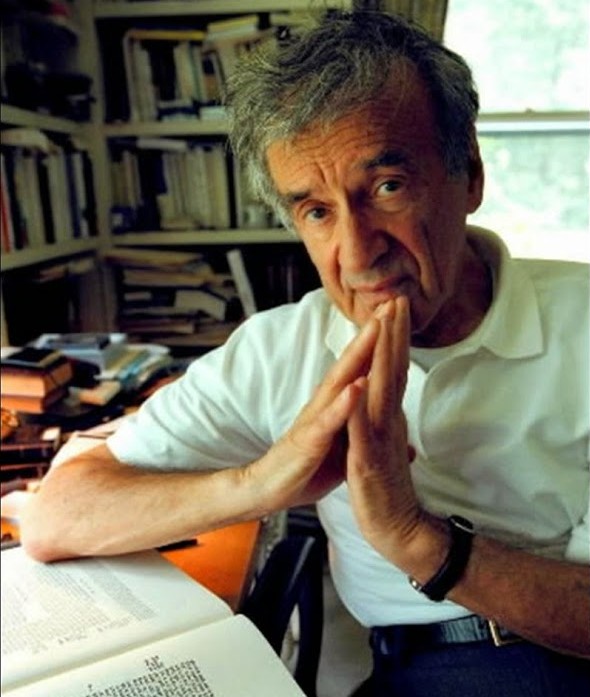
This image was also uploaded by Loupi Smith, but where did he get it? It’s obviously from the same 2006 photo shoot by Eyal Toueg.
Now take a look at another man’s equally hairy arm below– he is Erwin Farkas who was transported to Auschwitz from Hungary in 1944 at the age of 14. His number, A-7899, is only 186 digits beyond A-7713 – they are in the same time frame. His tattoo is faded and a little blurred, but still legible. There is no discoloration of the surrounding skin and the numbers are definitely blue. In fact, all the tattoos that one sees on the Internet are in this good of shape or better (many are fake though).
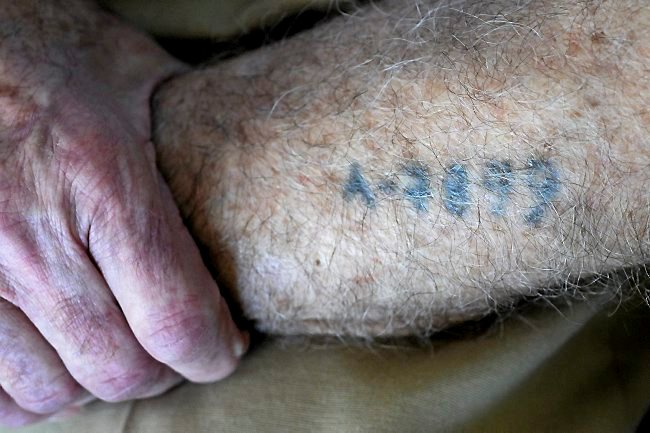
Erwin Farkas displays the Auschwitz tattoo A-7899 on his arm.
What happened to Wiesel’s that it is almost impossible to see? Only Wiesel could answer that – or would – so it’s clear that he didn’t want to since he didn’t allow the higher quality picture at the top of this page be published during his lifetime.
In the “court of public opinion” and morally (if not legally), there is no excuse for Elie Wiesel to have been given the velvet-glove treatment he was by journalists and by historians. He had a duty to show the tattoo he said was on his arm and allow it to be photographed. He had a moral duty to prove that it was what he said it was—A-7713. His failure to do that over the course of many years makes him, and the mainstream media that enabled him, guilty of worse than negligence — they are guilty of withholding evidence. The media and academics are more guilty than Wiesel himself because Wiesel has to be given the right not to incriminate himself.
But morally, Wiesel is guilty of withholding evidence that was available all the time.
Above, I used the words “higher quality” but if all these pictures of Wiesel in the white knit short-sleeve shirt were taken on the same day by a professional photographer (which it makes sense that they were) then they should all be of similar high quality. And since we can’t make out the numbers on any of the three, it can only be that it’s the fault of the ‘tattoo,’ not the photography.
I don’t believe this latest-to-be-revealed photograph from 2006 is photo-shop in any way. I do believe this is what Wiesel has on his arm, which he always claimed was A-7713. If it turned out to be A-7713, I would’t be upset in the least because all I’ve ever wanted was the truth about Elie Wiesel. But there will be questions and I will have a very hard time reconciling myself to the idea that the SS camp authorities could have made up a registration card for a 15 year old boy with the information that he was a 31-year-old man with the occupation of Schlosserlehring (Locksmith) – and never correcting it – allowing this boy to enter Buchenwald with that identification. No, it would be very hard to believe that.
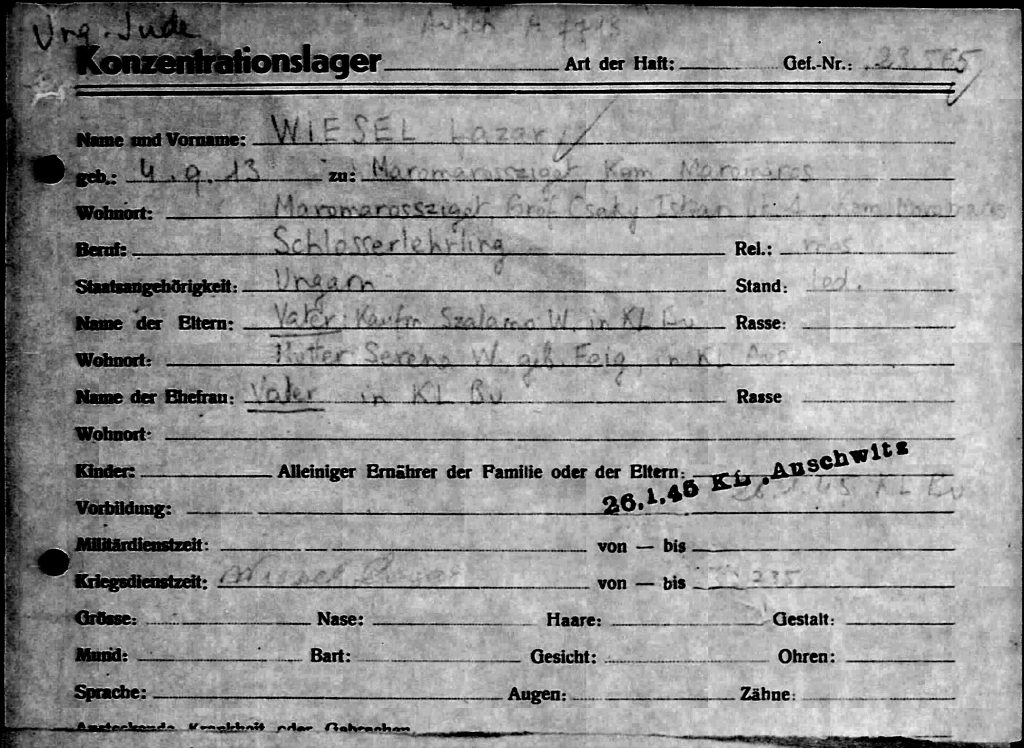
The Buchenwald file card that shows Lazar Wiesel, born Sept. 4, 1913 (age 32), occupation locksmith, A-B prisoner number A-7713, arrived in a transport that left Auschwitz on Jan. 26, 1945.
So I can only hope that more of these photos by Eyal Toueg will be published. Because as it stands now, Elie Wiesel’s tattoo claims still don’t pass the most elementary test – that of what the heck is the number!
12 Comments
Category Featured | Tags: Tags: Auschwitz tattoos, Elie Wiesel, Erwin Farkas, Lazar Wiesel,
Social Networks: Facebook, Twitter, Google Bookmarks, del.icio.us, StumbleUpon, Digg, Reddit, Posterous.
Saturday, July 9th, 2016
BY CAROLYN YEAGER
copyright Carolyn Yeager 2016
Though they say a picture is worth a thousand words, these two need some explanation. One is from 1987, the other from 2006. Since the more recent one will arouse much more attention, I better start with that.
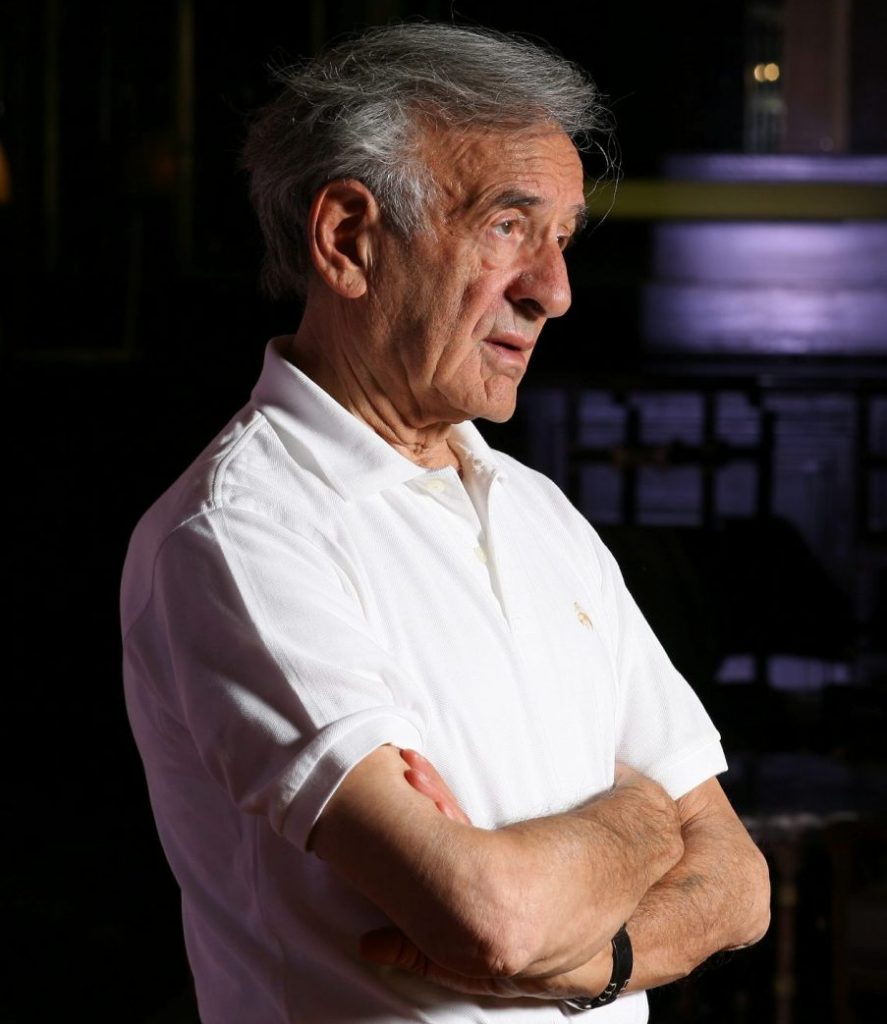
This 2006 photograph taken by Eyal Toueg, displayed in a July 9th “Premium” article by Shlomo Nakdimon at Haaretz, has been cropped by me to remove some of the dark space to the right … the better to see the important details. This may be the first time it has been published.
You will notice right away that there is a smudge on Wiesel’s left forearm, precisely where an Auschwitz tattoo would be. Many people will say, Oh, that’s his very, very faded and blurred tattoo. But it looks more like a bruise, and, by using your keyboard to enlarge the image while retaining a clear resolution, you’ll find, as I did, that it then looks even more like a bruise the larger you go. Plus there seems to be more bruise just above it where his right arm meets his left. [I’m speaking tongue-in-cheek here, and below. I don’t actually think it is a bruise, but all we can see, even highly enlarged, is a smudged blue area that looks like a bruise. So what are we to call it?]
[To enlarge the image, first click on it to get the full size image, then hold down the Ctrl key while clicking the plus (+) key as many times as you can or want. To bring it back to normal, do the same with the minus (-) key. Both keys are on the upper right next to “backspace”]
This photograph has to be from the same photo session that includes the one where he’s sitting with the oversize Hebrew book — he’s wearing the same white knit golf shirt and his hair is the same. That one has been used by Wiesel defenders to suggest there is a faint tattoo on his arm. You can see it here and here.
However, this kind of thing is the typical Wiesel mode of operation throughout his life. He refuses to be explicit about his person and his personal life, even though he gets very explicit about things like the “shades of wateriness of the soup” and the face of the boy he wrote was hanged in Auschwitz. But his own body–which can be checked–he offers not a word of description. And looking at this blue-black discoloration, I can see nothing—even with using all my imagination—that I could imagine to be a 7713. I know you can’t either, but you might try to come up with some theory about it. I have my own theory, that Wiesel pinched himself real hard the day before the photographer came.
In 2006 he was 77 years old, an age when it’s extremely easy to bruise the skin. And that’s what it looks like. Recall the tattoos of so many other inmates from his same time there — none look like this.
But I have a second theory, which might be better — that Wiesel had applied his own tattoo number with ink but he didn’t go deep enough. It was only applied to the dermis (outer layer of skin), not the epidermis, and so it disappeared over time as new skin cells grew until now it is just a smudge of dispersed ink. Remember the top photo on this page that doesn’t look like a real tattoo — this may be when he did it.
Now, the other picture indicts him even more. He is in Lyon, France for the Klaus Barbie show trial and stops by the Holocaust Memorial there on June 2, 1987. He just won the Nobel Peace Prize 6 months earlier, and this Buchenwald liberation photo was associated with him winning that prize. You recall right after the ceremony he traveled to Yad Vashem in Jerusalem and posed in front of a large blow-up of this very photograph.
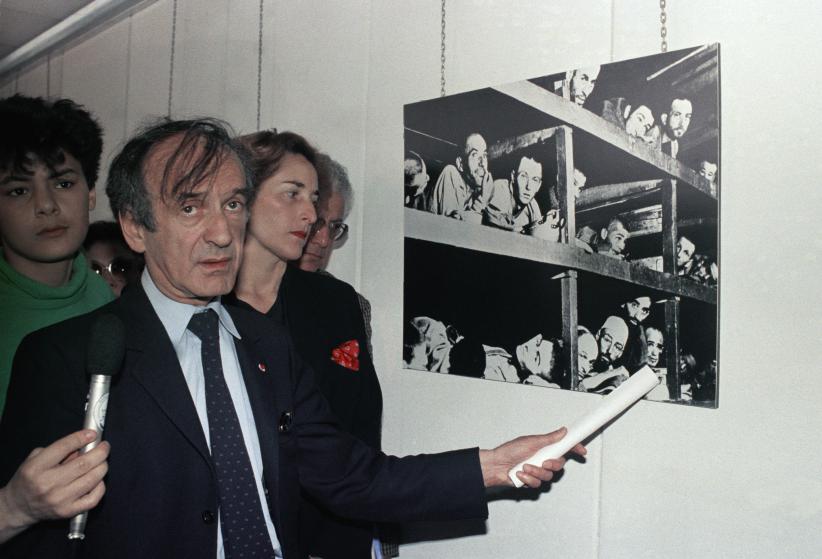
Elie Wiesel, winner of the 1986 Nobel Peace prize, visits the Holocaust Memorial in Lyon, France, June 2, 1987. The photo on the wall shows prisoners of the German Buchenwald concentration camp inside their barracks, five days after U.S troops took over the camp near Weimar, Germany. Wiesel points to himself in the picture. (AP Photo/Laurent Rebours)
Notice that Michael Grüner on the bottom row was cropped out of this version, along with the tall standing man, but there is Mel Mermelstein peeking out from the upper far right. Mel wrote a whole book about his incarceration before Wiesel said in 1983 that he was in this picture, but Mel never mentioned knowing the already famous Elie Wiesel there in his book! Mermelstein resided in the children’s barrack, too.
In this photograph, the unkempt Wiesel is sealing his doom by pointing directly to the unknown person (not him) he is claiming to be himself. And with such a guilty expression, too! Nothing could prove his dishonesty and forgery better than this.
I came upon this picture in the Time magazine Elie Wiesel photo collection posted at the time of his death. When I saw this one I quickly saved it. This might be my all-time favorite picture of the Wiesel. I will surely make more use of it.
23 Comments
Category Featured | Tags: Tags: Auschwitz tattoos, Elie Wiesel, famous Buchenwald photo,
Social Networks: Facebook, Twitter, Google Bookmarks, del.icio.us, StumbleUpon, Digg, Reddit, Posterous.
Tuesday, July 5th, 2016
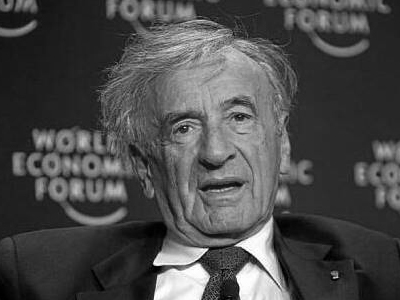
By David Blomstrom
July 2, 2016 marked the death of Elie Wiesel, who was probably second only to Anne Frank as the name most associated with the Holocaust. The timing was a little eerie, because I was hard at work on my series Jews 101 when I learned of Wiesel’s passing. It gets weirder still because another famous Holocaust survivor is currently making headlines — the famous Nazi-hunter, Simon Wiesenthal.
Wiesenthal died several years ago, but the city of New York recently cut off its “spigot of funds” to the Simon Wiesenthal Center, which is at the center of some huge scandal, like most Jewish “charities.” Speaking of corruption, did you know about Elie Wiesel’s connections to Bernie Madoff, who could be called the Elie Wiesel of fraud?
It all started with one of Elie Wiesel’s scams, the Elie Wiesel Foundation for Humanity, which he established in 1988. Like a number of other well-known Jewish “charities,” the Foundation was easy pickings for Uncle Bernie, the financier who was arrested in late 2008 and accused of running a $50 billion Ponzi scheme. Wiesel said he ended up losing $15.2 million in foundation funds, along with his and his wife’s own personal investments. He probably hated Bernie Madoff more than anyone except Adolf Hitler. The irony is that Hitler would have taken care of Madoff if he was still alive.
You see, Wiesel, Wiesenthal and Madoff are all Jews, and Madoff isn’t necessarily the worst of the three. Wiesel and Wiesenthal are both widely regarded as liars, and that’s just the beginning.
Wiesel and Wiesenthal both claimed to have spent time in Nazi concentration camps, and both milked their misadventures for all they were worth. Ironically, some people suspect that neither one ever set foot in a concentration camp. Indeed, Wiesel is perhaps the most popular poster boy for the Holohoax camp. Others believe there was a Holocaust of sorts and Wiesel and Wiesenthal really were caught up in it, but they greatly exaggerated the horrors they witnessed.
As I researched Elie Wiesel, I discovered a story so remarkable I’m amazed Hollywood never turned Wiesel into a movie star. The story is complex, too; Wiesel was a man who could be loved or hated, depending on one’s perspective.
So I decided to write two eulogies for Wiesel. The first is written from the perspective of an anti-Zionist or an anti-Jewarchist who hates Jewish corruption in general. The anti-Jewish/NeoNazi crowd will enjoy it, too. The second is written for the Elie Wiesel fan club, which includes people involved with the Holocaust Industry as well as Microsoft shareholders and the Andy Warhol cult.
1. The Bill Gates of Holohoaxers
Just for argument’s sake, suppose Wiesel wrote and spoke the truth, and the Germans who gave us the Holocaust were just as evil as he claimed. Suppose they were as twisted as Obama, who flaunts his Nobel Peace Prize even as he slaughters innocent people with unmanned drones and continues callously torturing people. I would still despise Elie Wiesel (who was also awarded the Nobel Peace Prize in 1986). Why?
[…]
Elie Gates, meet Bill Wiesel
However, a better comparison would be Elie Wiesel and Bill Gates. Combine Woody Allen’s forlorn face with Bill Gates’ famously untamed hair, and you might have an Elie Wiesel lookalike. But beauty is more than skin deep.
Like Bill Gates, Elie Wiesel was a con man. Like Gates he claimed to care about humanity while really advancing his personal agenda. Wiesel even attended the World Economic Forum in Switzerland, an event perhaps most closely associated with Bill Gates.
Oprah Winfrey, too!
Another person I’d like to weave into this story, just for the Hell of it, is Oprah Winfrey. Like Wiesel, she’s a media whore, though the similarities pretty much end there.
Oprah once declared that anyone who criticizes Obama must be racist, just as people who criticize Israel are racist. Obama, who has all but transformed into a Jew himself, showed his appreciation by giving Oprah the Presidential Medal of Freedom. Next thing you know, Oprah will follow Obama’s lead and start wearing one of those stupid Jewish prayer caps.
On second thought, Oprah does resemble Elie Wiesel in another important respect; she exploits child abuse the way the Weasel exploits the Holocaust. Which isn’t to say Oprah wasn’t really a victim of child abuse. Who knows?
Oprah once accompanied Wiesel to Germany, where they toured the concentration camps Wiesel once called home. Maybe some day she’ll visit Gaza.
The Arm Mystery
Elie Wiesel may have a secret in common with former Seattle Mayor Norm Rice. Rice was allegedly shot by his wife after she caught him in bed with another lover (a man). I always wondered why Rice didn’t shut critics up by just rolling up his sleeve and showing them a scar-less arm.
Similarly, Wiesel claimed the Nazis tattooed A-7713 on his left arm, but some critics claim he lied. The world’s most famous tattoo can’t even be seen in photos of Elie wearing short-sleeved shirts.
The Two Faces of Elie Wiesel
Wiesel did his part to prevent Iran from making nuclear weapons, though he apparently had nothing to say about Israel’s illegal nuclear arsenal. The Times (London) refused to run his ad condemning Hamas for the “use of children as human shields” during the 2014 Israel-Gaza massacre (when Israeli storm troopers killed a helluva lot of children, shields or not). He also declared that “Jerusalem is above politics . . . it belongs to the Jewish people.” Screw the genuine Semites who have lived there for centuries.
Elie Wiesel blasted Fidel Castro, ranting about political prisoners, yet never missed a chance to be photographed with Obama, who’s still torturing people on some island in the Caribbean…could it be Cuba?
No hypocrisy there! And for good measure, Elie hammed it up with George W. Bush, too. Indeed, he supported George W. Bush’s invasion of Iraq as a necessary moral act.
I’ll shed no tears for Elie Wiesel, who was obvious a RACIST LIAR AND HYPOCRITE. More at governor5.com/Statement on Elie Wiesel
3 Comments
Category Featured | Tags: Tags: Bernie Madoff, David Blomstrom, Elie Wiesel, Simon Wiesenthal,
Social Networks: Facebook, Twitter, Google Bookmarks, del.icio.us, StumbleUpon, Digg, Reddit, Posterous.
Wednesday, June 1st, 2016
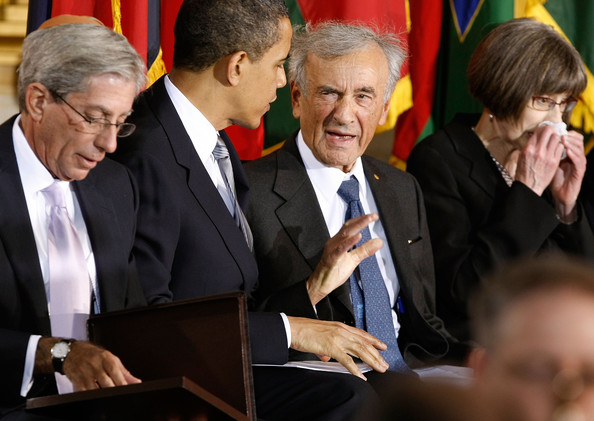
Elie Wiesel shows his ugly side in an unguarded moment during a “Holocaust Remembrance Day” ceremony at the U.S. Capitol Rotunda in 2009.
By Carolyn Yeager
TIFFANY YEP, LINKING TO a Google page of that name, wrote a comment to my article “Elie admits he doesn’t have the tattoo A7713.” I thought it called for more attention than a comment usually gets so I’ve made an article out of it. Tiffany is apparently in high school, and I can say the generation gap between us is pretty vast since I don’t understand her Google page at all. (I’m sure I’m not supposed to.) The comment, however, is easy to understand and I’ve seen quite a few like it. However Tiffany, being pretty bright, adds a slight twist. She says that Elie Wiesel’s version of what took place in the concentration camps, even if he made it all up, is still more valuable as a teaching aid than are more forgiving stories because he portrays the “horror” the Jews felt. I noticed on Yep’s Photo page a couple of holocaust horror pictures – one a very dishonest composite with Dr. Mengele, taken from an exhibit. Here’s her comment to me, all packed into one paragraph:
Tattoos can easily fade over the course of many decades. Even if he is not truly a survivor, his book “Night” has done wonders to teach people what went on in concentration camps. All you hear are tales of bravery and resistance and love from books about the Holocaust. These books betray the true horror of the Holocaust. Many of the survivors did not speak of what if (sic) actually felt like to be imprisoned in Auschwitz or Monowitz. Wiesels’ novel, real or not, accurately displays the anger and helplessness felt by the Jews in Germany and Poland and in other parts of Europe. Even if you are right and he is conning people, he still deserves that Nobel Peace Price (sic). Millions of youths from around the world have learned from “Night”, and in order to mot (sic) repeat history, we must learn the history. he could also have removed the tattoo, since his entire life does not center solely on his novels, and he can possibly be triggered when looking at the tattoo. If you haven’t picked up what I’ve been saying in this essay, basically a) you call him an idiot if he removed the tattoo because he wrote the books-he has his own feelings outside of proving he was at Auschwitz, and he may be triggered by the tattoo and the memories behind it, and b) even if he has never set foot in Auschwitz, his book has still done wonders to educate people on the honest horror and devastation in the concentration camps, versus the stories of faith and love and selflessness of people who managed to avoid it. And answer this question-if he was never in a concentration camp, how on earth was he able to depict them so accurately?
Let’s take the first sentence, Tattoos can easily fade over the course of many decades.
Yes, they can fade, but do not become invisible. “Most tattoo inks will fade over time but never fade away completely. The edges of the tattoo usually become less defined with time,” says the sharpologist. Tattoos are applied to the Dermis, which is underneath the Epidermis (top layer of skin). The Epidermis replenishes itself by forming new skin cells, but the Dermis does not. Tattoos are permanent, although will experience some fading over decades, according to this site.
This page should convince Tiffany that her theory of Wiesel’s vanishing tattoo cannot be right. Please notice the pictures of Auschwitz survivors who are more than willing to show off their tattoos. There is Samuel Bradin (now 86), Henry Flescher (now 92), Leo Zisman (now 84), and Paul Argiewicz (died in Dec. 2013 at age 88). Notice that each of their tattoos is somewhat faded but still very visible.
Elie Wiesel is now 87, in the same age group, but he does not “show” his tattoo because he doesn’t have one. If he had one, it would be just as visible as those of his contemporaries. Wiesel stands out at this event where he was the main speaker as being the only Auschwitz survivor who doesn’t pull up his sleeve. No one would dare ask him to, either. To any but the willfully blind, this behavior (along with photos of his bare arm) proves that Wiesel never had an Auschwitz tattoo.
The next amazing statement Tiffany makes is “Even if he is not truly a survivor, his book “Night” has done wonders to teach people what went on in concentration camps.”
So where did he learn what went on in concentration camps if he had not been in even one of them? I doubt Tiffany is aware that Wiesel gets angry when people suggest his book is a novel, not his faithful testimony. But what Tiffany is actually saying is that people who weren’t there can teach us what it was like to be there just as well or better than people who were there. Read that sentence again. The reasoning goes that those who make it up, who invent stories out of whole cloth, can write more interesting books than those who tell it as it actually was. Does Tiffany likes the gory stuff because that is the focus in her school holocaust lessons?
She’s saying that Wiesel’s novel, whether real or not, is still accurate in it’s depiction of how the Jews felt. No! What is not real cannot be called accurate. Wiesel know Jews, there’s no doubt about that. He describes Jews as he knows them, inside a concentration camp of his own invention, creating peculiar Jewish conversations. When the reader can relate to the characters, and live the event and feel the feelings vicariously, that is a successful novel. But to be a testimony, it has to have actually happened. Tiffany doesn’t care about such distinctions; she wouldn’t bat an eyelash over Wiesel’s own admission that what he writes isn’t true. He has famously admitted in various versions:
“In literature, certain things are true though they didn’t happen, while others are not, even if they did.”
He’s confessing that he’s writing “literature”, not testimony – literature being imagination and story-telling, testimony being a faithful account of what one has observed. And Tiffany goes along with that because she approves of super-charging the story-line to better get the point across.
Finally, she says. even if he is conning people, he still deserves that Nobel Peace Prize. For conning people?! If the Holocaust is a con (not just by Wiesel), then it is not history. Therefore, there has to be some reason that it is pretending to be history. If we learn not to repeat what never happened anyway, we are learning nothing. What should we be learning instead? We should be learning why and by whom this Holocaust con has been brought to us, that’s what.
When invention and 2nd-3rd hand information are offered in place of faithful testimony, it is then a lie. A LIE cannot be accurate. Tiffany would do well to try to understand the moral distinction. All her nattering about Wiesel’s feelings is meaningless, since she doesn’t know him or his feelings. Rather than imagining what he feels, she would do well to read Holocaust High Priest by Warren B. Routledge and learn something about the real Elie Wiesel.
Wiesel has also done nothing for peace. He is unqualifiedly pro-Israel and Israel is an aggressor-nation ever since it was allowed under strict rules in 1948. It has broken every rule and also sureptitiously developed powerful nuclear weapons. How does the promotion of the false holocaust story bring about peace in the world? Israel and Jewish surlievers collect ever-increasing amounts of money from Germany, along with nuclear submarines, and also huge amounts of money to buy armaments from the U.S. So much is given to Israel there is not much left for anyone else.
At the end of her comment, Tiffany does me a favor by asking me to: Answer this question-if he was never in a concentration camp, how on earth was he able to depict them so accurately?
Oh, so easy. He didn’t! That is what most of the articles on this website are about – how his stories about Auschwitz and Buchenwald don’t fit the official narrative – and contain numerous inner and outer inconsistencies and contradictions. There is nothing accurate about his descriptions (or lack thereof) of Auschwitz, Birkenau, Monowitz or Buchenwald. He waited 10 years to write his “testimony” in order to have other reports to model his on, not because of the fatuous reasons he gives—and he still got most of it wrong! No, clearly, Tiffany doesn’t have any idea what is accurate when it come to the “Holocaust” or to Elie Wiesel, but I will venture to say she likes the story the way Wiesel tells it because it makes her feel good about herself – she is one of those who will make the world a better place.
So now Tiffany, how about answering a question for me: How on earth can you believe something you know so little about?
By what inner workings have you accepted what you were taught in school without applying any critical analysis? Was there a critical element involved in your Holocaust Study unit? Were students comfortable in asking questions of a critical nature? Do you consider yourself well-educated about Elie Wiesel and the “Holocaust?” Will you even ask these questions of yourself?
Maybe someday you will. I’m glad you let me know that you have read this site. I invite you to read and comment more, as I would be more than happy to get into a dialogue with you.
8 Comments
Category Featured | Tags: Tags: Elie Wiesel, Night, Tiffany Yep,
Social Networks: Facebook, Twitter, Google Bookmarks, del.icio.us, StumbleUpon, Digg, Reddit, Posterous.
Tuesday, March 22nd, 2016
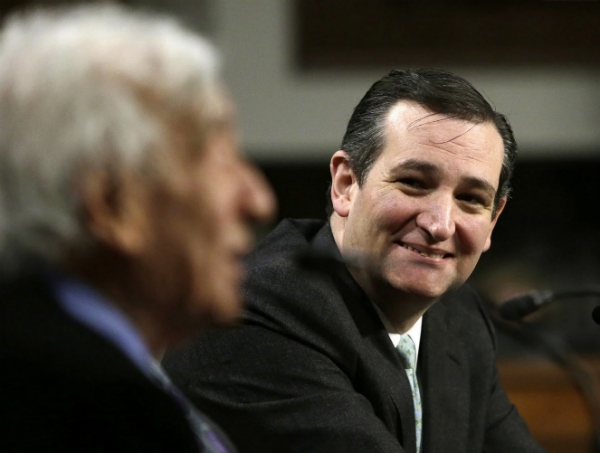
U.S. Sen. Ted Cruz (R-Tex.) listens to Elie Wiesel at a Senate roundtable discussion last year. Cruz said the nuclear talks with Iran were reminiscent of Western appeasement of Hitler. (Say again??)
By Carolyn Yeager
Currently running for the Republican nomination for President of the United States, Cruz spoke on Monday, March 21 to the annual American-Israel Public Affairs Committee, Washington’s largest lobbying group and an unregistered agent of the Israeli government in the U.S.
His words were described as being those he has spoken many times before, but naturally what stood out to me was what he said about Elie Wiesel. At 13:40 into his speech he said:
A year ago, I was honored to join the great Elie Wiesel on a panel discussion in the Senate about this disastrous Iranian deal. Not a single democrat was willing to join Elie Wiesel … to sit alongside someone who witnessed first hand the horrors of the “Holocaust,” who brings a moral weight and gravity second to none, was both powerful and humbling. And I am convinced, after this election, the American people will stand and say together “Never Again” means never again.
On my very first day in office I will begin the process of moving the American Embassy in Israel to Jerusalem, the once and eternal capital of Israel.
Does Texas senator Ted Cruz know anything at all about what is called the “Holocaust?” Does he know anything at all about Elie Wiesel’s life? No, to both. I am sure he has never read a single book by Elie Wiesel, yet he calls him “the great” based on the fact that Wiesel was awarded the Congressional Medal of Honor by the same ignorant Congress of which he is a part. This man Cruz is a complete panderer who accepts whatever the Jewish power structure says and bows low hoping to be selected to do its bidding.
And what does he mean by “After this election, the American people will say “Never Again” means never again.” Does he mean the “Holocaust” will be more dominating than ever? And Jews will be protected like never before? Just the direction we should not go in.
Cruz goes on to say at 15:08:
And as president, I will do everything in my power to ensure that anyone who provides financial support to the BDS movement, including schools and universities, will lose any access to federal funding. And to the extent they have engaged in any illegal behavior, they will be prosecuted to the fullest extent of the law.
BDS stands for Boycott, Divestment and Sanctions – a global campaign to increase pressure on Israel to end its occupation of Palestinian land. Israel is clearly the immoral party in this situation, yet Cruz cares not for morality, even as he holds himself up as an evangelical Christian following the teachings of his Cuban father’s rather extreme Christian cult. In reality, Cruz is an Old Testament Christian – in other words, a Jew. A man who feels honored to sit next to one of the most obnoxious liars of the 20th Century (and into the 21st), Elie Wiesel, author of the entirely false testimony, Night.
For these reasons, I want to make it known that I will never, under any circumstances, vote for Senator Ted Cruz for anything. Should he somehow become the Republican nominee, I will choose not vote, and will sit out the election in disgust.
1 Comment
Category Featured | Tags: Tags: AIPAC, BDS Movement, Elie Wiesel, Jerusalem,
Social Networks: Facebook, Twitter, Google Bookmarks, del.icio.us, StumbleUpon, Digg, Reddit, Posterous.
Saturday, March 5th, 2016
Followup of “Elie admits he doesn’t have the tattoo A7713”
By Carolyn Yeager
copyright 2016 Carolyn Yeager
![Elie Wiesel's left arm in bright sunlight in a still from his own video "Elie Wiesel Goes Home" - no retouching. [courtesy Eric Hunt]](https://www.eliewieseltattoo.com/wp-content/uploads/2012/01/EW_arm-no-tattoo1-e1450887466391.jpg)
Elie Wiesel’s left arm in bright sunlight in a still grabbed from his own movie “Elie Wiesel Goes Home” – no retouching possible. [courtesy Eric Hunt]
Turns out? How long do we wait for something to “turn out?”
Wiesel will be 88-years-old on September 30th of this year. Very few human bodies are able to carry on after their 90th year, so, without a consensus opinion from the revisionist community, we are looking at the prospect of an eternal “We’ll never know” pasted over the Elie Wiesel tattoo question. Naturally, this is what Wiesel supporters want, but should revisionists be content with never going beyond that, continuing to fear there will come a time he will dramatically pull up his sleeve for the cameras?
He’s already done so and we have the result in the image at right.
And what don’t people understand about logic? One doesn’t need a University course in logic to use common sense. Two plus two adds up to four – we don’t need a calculator to prove it, our fingers can tell us. What should we think of those who would say “But what if it doesn’t? What if our fingers turn out to be wrong?”
It’s the same logic we use when someone tells us he has a number tattooed on his arm that proves he was at Auschwitz in 1944 – we expect it to be shown to us. There is no reason we should have to take it on trust. Imagine yourself in a real life situation like that and you’ll get it. Those who are willing to accept a deal such as we have in the case of Elie Wiesel are either cowards, frightened serfs, or collaborators in the lie. But people are also ignorant of the facts – even though mostly through choice, and maybe also poor memory.
For this reason, I want to specifically address these persons to try to give them a little backbone … er, I mean background. You need to be clear about how Elie Wiesel got into this tattoo quandary to begin with.
To those whose reasoning goes, Why would Wiesel say he has a tattoo when he doesn’t have one? He wouldn’t be so foolish, therefore I have to assume he might have one. He also doesn’t need to have a tattoo to have been at Auschwitz, – they forget about the Yiddish book, Un di Velt hot gesvign (And the world remained silent), from which Night was taken. In that book, and carried over to Night, Eliezer and his father were tattooed on their left forearms with A7713 and A7712. It follows that if Night is Elie Wiesel’s own story, he has to have a tattoo.
On page 51, the author wrote:
The three “veterans,” with needles in their hands, engraved a number on our left arms. I became A-7713.
Now I hope you understand (and please don’t forget it again) why he has to have that particular tattoo, and why he has always said he does have it. He has no choice. The fact that it has never been shown to the public speaks volumes (never underestimate his belief in his ability to fool the public), as well as the fact that we’ve seen his uncovered left arm in photographs and there is no such number there. What more proof do you want? The final nail in the coffin is that Wiesel and the people around him remain silent about it – they will not allow the question to be asked. That is the “admitting” part.
So it’s settled – Wiesel has no tattoo, and he admits as much. He’s kept up the lying charade so long because he could! No one challenged him. Once again, I will give credit to Jew Michael Grüner for breaking this open, even though he makes up plenty of ridiculous concentration camp stories himself. But Grüner got the documents and made them public, along with explanatory letters from Auschwitz and Buchenwald.
If Wiesel is not a concentration camp survivor, we need to look into other possibilities for his whereabouts in 1944. We will not be able to prove anything – this period of time could not be more confused. Displaced persons and self-identified camp survivors were flocking into Western Europe in search of opportunities; they were creating new identities and applying to go to Israel and to America. In all of this, it’s impossible to find any kind of a trail. But some pathways are more plausible than others for the Wiesel family.
Wiesel’s family is not found in records at Auschwitz
Speaking of documents, do you know there is no record of any member of Wiesel’s immediate family at Auschwitz? That’s a fact. In addition, the only record, as far as I know, of Elie’s two older sisters being at the Dachau sub-camp Kaufering comes from a book put out by the “Central Committee of Jews in Bavaria” in 1946. They published a list of 61,387 Jews in a book named Sharit Ha-Platah (translates as “Counted Remnant”), among which are listed Hilda and Bea Wiesel. The names were collected by Chaplain (Rabbi) Abraham Klausner, who is said to have visited many of the camps in southern Germany where survivors gathered in late 1945 and 1946. You better believe the Rabbi wanted to get as many names as possible, and that there is nothing official about this list.
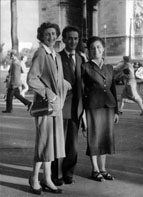
Bea, Elie and Hilda Wiesel in Paris after the war.
We first meet up with Hilda and Bea as refugees in Germany, just as we first meet up with Elie at a Jewish orphanage in France. Hilda Wiesel married an Algerian Jew and moved with him to Paris. She has since spoken about her family’s deportation in a Shoah Foundation videotaped interview, but without details of what happened after they arrived at Auschwitz. Her sister Batya (Bea) emigrated to Canada and never spoke publicly about it at all.
Hilda’s Shoah Foundation testimony which she gave in 1995 (coincidentally the same year Elie’s official autobiography All Rivers Run to the Sea came out) differs from her brother’s story in Night in numerous details. Relevant here, she said:
We were deported on 15 May [1944]. We heard around 1943, because we had family in Belgium, we heard that they had deported a cousin, but we didn’t know where to …
I can only tell you one thing, that the third transport – we had to stand 5 by 5, five abreast – there were Hungarian gendarmes, hardly any Germans, mostly Hungarian gendarmes.
We were myself and my sister, the one who was in Canada and is now deceased; my mother; my grandmother, that is my father’s mother; and, oh … my little 10-year old sister. And we arrive in Auschwitz, the men were apart, my father with my brother.
According to the original Night and the Yiddish And the world remained silent, the family’s deportation date was June 3, 1944. In Marion Wiesel’s re-translation, it was changed to May 20. So which is correct? Most likely none.
Hilda also tells us the women and men traveled in separate cars.
My mother knew there was no hope, because she told me and my sister, always stay together, always stay together. And she said, go tell your dad to always stay together with Elie. And I ran over to him and said, Papa, stay with Elie, stay with him – like that.
Q: This was on the train, that you are describing?
A: No, it was after getting off the train.
If they were in the same train car, Mother could have told her husband herself. But Night and its Yiddish precursor describe the boys and girls having sex together in the darkness of the train, freed from following the usual rules, and Wiesel says he was traveling with his mother and sister — everyone was together. Let me make clear that I don’t have any more faith in 70-year old Hilda Wiesel Kudler’s testimony than I do Elie Wiesel’s “stream-of-consciousness” autobiography, which, as I said, coincidentally appeared at the same time in 1995. And I am not convinced by this that the family really went to Auschwitz since not one of them was registered there, nor do their names come up on any hygiene or other reports even though they were supposedly put in quarantine. We do find Lazar and Abraham Wiesel, and Myklos Grüner, his father and brother listed on a hygiene report.
I’ll also add that Mother, Grandmother and youngest sister [10 years-old according to Hilda Wiesel, but 7 years-old according to Elie in Night, where Grandmother is not included] are understood to have been sent directly to the “gas chamber” and gone up in smoke through the chimney shortly thereafter. Since homicidal gas chambers didn’t exist, all the women would have been sent to the showers, gone through the disinfection process, given new clothing and assigned to a women’s barrack, the same as Wiesel writes about Eliezer and Father. However, a grandmother and mother with a child would have been assigned to non-working barracks; the two 20-somethings to barracks for female workers.
A very odd fact is that both in Night and in the Yiddish book, Eliezer and Father never mention their wife, daughters, mothers and sisters again. They don’t look for them, talk or ask about them, as other people did. They apparently accept being told that their loved ones “went up the chimney” and immediately become concerned only for themselves. I don’t believe this; it’s not human nature, it’s make-believe.
So if not there, where else could the Wiesel family have been in 1944?
Following a trail of possibilities
Well, we do have Shlomo and Mendel Wiesel’s first cousin Yaakov Fishkowitz filling out a Yad Vashem Page of Testimony for each of them, reporting they both died in 1943 in a “labor camp.” If Yaakov didn’t believe this were true, why would he have done this in 1957 at the same time he filled out other pages for relatives he marked as being sent to Auschwitz in 1944? He also said Shlomo was born in 1903 and Mendel in 1905.
Add to this the very weak story Elie Wiesel gives for why his family didn’t do something to protect themselves from the “Nazi menace.” On page 8 of Night, Wiesel wrote:
In those days it was still possible to buy emigration certificates to Palestine. I had asked my father to sell everything, to liquidate everything, and to leave. ‘I am too old, my son,’ he answered. ‘Too old to start a new life. Too old to start from scratch in some distant land …’
Too old at the age of 41? Fishkowitz puts his birth in 1903. Other than that, there is no official birth date for Elie Wiesel’s father. In a close family, children always know their parents’ age and birthday. Hilda said her mother was born in 1900. So Shlomo Wiesel’s age is being covered up by son Elie, who left blank the DoB space on the Page of Testimony he filled out for his father. We can say that the oldest Shlomo could have been was 48, but more likely younger. Wiesel has always made his father out to be a tired old man, especially in Night. I have distrusted this characterization and believe it was a literary device to make the story more poignant, just like turning 10 year-old Tsipora into a 7 year-old.
The following interesting passage is on page 27 of the Yiddish Un di Velt hot gesvign, but is not included in the shorter French or English Night:
We had opportunities and possibilities to hide with regular goyim and with prominent personalities. Many non-Jews from the surrounding villages had begged us, that we would come to them. There were bunkers available for us in villages or in the mountains. But we had cast aside all proposals. Why? Quite simple: the calendar showed April 1944 and we, the Jews of Sighet, still knew nothing about Treblinka, Buchenwald and Auschwitz.
Two things here. It again says it was April, not May, when the Sighet Jews first learned they would be deported. It confirms the passage on page 83 of the Yiddish book: “It was a beautiful April day,” said on one of their first days in Auschwitz-Birkenau.
The other thing – it is not true the Jews of Sighet knew nothing, yet that is what Wiesel writes in his autobiography All Rivers, while at the same time he also writes of Polish Jews passing through their neighborhoods telling stories of terrible atrocities by German occupiers. He says that non-Jews offered the Wiesel family places to stay. Wiesel writes that their Christian maid Maria begged them to come to her village and she would keep them safe. How many Jews may have taken advantage of such offers? But we’re told that Shlomo Wiesel refused to accept this kindness of Christians, and Elie’s only explanation is that they still didn’t believe the stories they were hearing. Then he blames the world for not warning them! This can be found in All Rivers Run to the Sea, on page 63 and 68-69.
Isn’t is possible the reason we find mention of these offers of help in all three Wiesel books is because it was such an important part of his experience that he felt compelled to include it? His family hid out and were protected from arrest. Or … maybe only he was sent away for safety, and his mother and sisters had different experiences. His father too, unless he did indeed die in 1943.
After the war, when only Elie and his two older sisters reunited, it was convenient to say the others were “murdered” in Auschwitz. That was the preferred story at the time. After all, with an advertised death toll of four million until 1990, there was plenty of room to say hundreds of your relatives were exterminated there.
In France
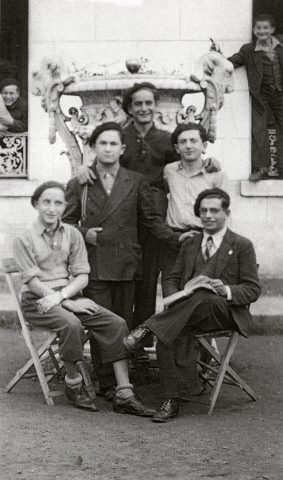
Elie Wiesel is center-top with a group of friends all wearing berets, at Ambloy, France in 1945.
Wiesel could have been sent to the home for Jewish orphans in France after the war from wherever he had been staying. In the few photographs we have, he looks cheerful and well-adjusted. He has friends, and seems to be a leader of younger boys. His hair is very long in the front, too long to have grown out from a concentration camp shaved head just a few months before.
From his very first year in France he was extremely interested in Zionism, the struggle in Palestine, and was a supporter of the Irgun, the Jewish terrorist organization in Palestine. Where did he learn all this, since he says that while in the camps he had no interest in anything. This is another reason to suspect he sat out the “Hungarian Holocaust” and was staying in a safe political environment somewhere.
I have written so many details in the various articles on this site that suggest or show outright that Wiesel has lied about many, many things – that he is faking it when it comes to so many aspects of his story. It’s not like he’s a paragon of truthfulness and I am therefore going out on a limb, or defaming him, by questioning the basics of his story. What really gives me a justification to do so comes back to – yes, that’s correct, his lack of a tattoo!
I think it shows that Wiesel and his friends know how damaging this tattoo business is by the fact they won’t speak about it – they completely refuse to deal with it. The Jewish Shoah believers in France at Enquete & Debat tried but could not get Wiesel to answer any questions about the tattoo by writing to him at his Foundation office in Romania. After a period of time they phoned there and Wiesel’s assistant hung up on them as soon as she realized what they were calling about. If holocaust-believing Jews are treated that way, it tells us just how unwelcome the topic is.
As I’ve said before, the only way to bring attention to Wiesel’s serious tattoo problem is to make a lot of noise about it – to get public attention on it. This is not happening and will not happen as long as the general response is: Forget the tattoo because it might turn out that he has one.
The cowardice in such a position leaves me flabbergasted. It’s half ignorance, as I said above, that is true, but the other half is lack of nerve. I am doing my best to dispel the ignorance. Those promoting the Wiesel legend lie, lie, lie, lie, lie and it doesn’t bother them in the least, while the truth forces are afraid of being wrong when the odds for being wrong on this are 5% or less – to me, it’s 0%. To continue to be content with just asking the question “Is it possible that Elie Wiesel doesn’t have the tattoo he said he does?” and fail to go beyond that to a declarative statement on the matter is not an acceptable outcome considering all we know.
It’s time to put all doubts aside and claim the obvious.
8 Comments
Category Featured | Tags: Tags: Auschwitz, Elie Wiesel, Hilda Wiesel, Night, Shlomo Wiesel, Un di Velt Hot Gesvign, Where's the Tattoo?,
Social Networks: Facebook, Twitter, Google Bookmarks, del.icio.us, StumbleUpon, Digg, Reddit, Posterous.
Sunday, December 27th, 2015
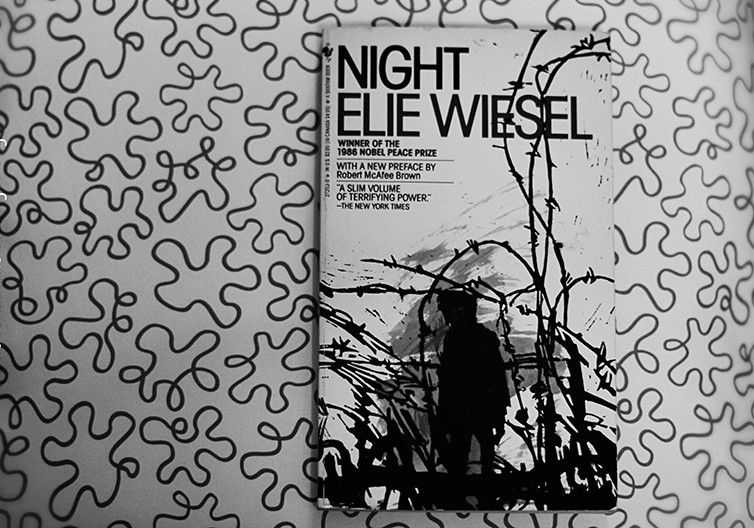
The original “Night” by Elie Wiesel is a puzzle for discriminating readers.
By Carolyn Yeager
copyright 2015 Carolyn Yeager
The pieces to the puzzle of Elie Wiesel and his book Night will never come together to form a coherent image. Readers and critics have long puzzled over the nightmarishly grotesque events that Wiesel presents as real, and refuses to repudiate. But he has actually given us the explanation all along—it’s just that it’s one so many don’t want to believe.
In his autobiography, Wiesel recounts a time when, visiting Israel, he went to see the “young” Rebbe of Wizhnitz, whose father he remembered with reverence from his childhood. At the end of the visit, which took two pages (273-75) to tell, the Rebbe questioned the young writer without being satisfied with his answers. Then:
The conversation became more relaxed. He asked me about my work. He wanted to know if the stories I told in my books were true, had they really happened. I answered not too convincingly: “In literature, Rebbe, certain things are true though they didn’t happen, while others are not, even if they did.”
I would have loved to have received his blessing.1
Notice that he first says he is writing “literature”2, not faithful accounts of his own experience. Next, we understand that by withholding his blessing, the noted Hasidic rabbi conveyed he was not pleased with the evasive answer of the Hasidic Jew Elie Wiesel. Wiesel himself says his answer to the final question was “not too convincing.” And finally, since Wiesel admits that he writes about things that never happened as being true, we can’t even be sure that this event happened, can we. This is the problem with everything in the life and work of Elie Wiesel.
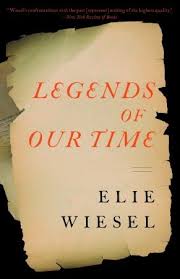
Legends of Our Time by Elie Wiesel
In a book first published in 1968, Legends of Our Time, Wiesel tells the story of that same visit to the rabbi this way: The Rebbe is troubled to learn that Wiesel has become a writer, and wants to know what he writes. “Stories,” Wiesel tells him, “…true stories”:
About people you knew? “Yes, about people I might have known.” About things that happened? “Yes, about things that happened or could have happened.” But they did not? “No, not all of them did. In fact, some were invented from almost the beginning to almost the end.” The Rebbe leaned forward as if to measure me up and said with more sorrow than anger: That means you are writing lies! I did not answer immediately. The scolded child within me had nothing to say in his defense. Yet, I had to justify myself: “Things are not that simple, Rebbe. Some events do take place but are not true; others are—although they never occurred.”
What are we to make of this? Truth loses all meaning; Wiesel acknowledges he tells tales that he wants you and me to believe really happened when he himself knows they didn’t. He doesn’t apologize either. He justifies. He deflects the rabbi’s sharp moral denunciation with his own measure of pseudo-mystification, in spite of the fact that his rebbe sees through him. And that is the way he is with the public too—even though it is understood by the intelligent critics that he is writing fiction, he keeps up the “witness” pretense for the gullible and the young.
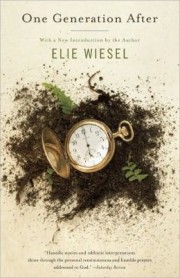
One Generation After by Elie Wiesel
In another book, One Generation After, first published in 1965, he wrote the same thing. He referred to it in a conversation with Giles Lapouge in 1970, which became a chapter in the book edited by Robert Franciosi, Elie Wiesel: Conversations (2012). The chapter was titled “Elie Wiesel, The Witness.” On page 33, Lapouge quotes Wiesel:
In [my] book “One Generation After” there is a sentence which perhaps explains my idea: “Certain events happen, but they are not true. Others, on the other hand, are, but they never happen.” So! I undergo certain events and, starting from my experience, I describe incidents which may or may not have happened, but which are true. I do believe that it is very important that there be witnesses always and everywhere.
There you have it—Wiesel’s method. He makes it up! And the overarching purpose of his efforts is to contribute to the well-being of the Jewish State of Israel. To Wiesel this is the greatest cause of all, for which he offers his writing ability to contribute to the “Holocaust” stories that are so crucial to Israel’s success. In this, Wiesel has joined a horde of other Jews who do the same, copying from one another, but no other “witness testimony” has had the impact of Night.
It should be understood that Wiesel has been a fervent Zionist since his youth—well before the deportation of Hungarian Jews. His whole family were Zionists, and his Father, according to Elie in several books, had spent time in a Budapest jail for involvement in smuggling operations, sending Jews, money, and probably weapons to Palestine.
Then he adds how necessary it is to have witnesses—all the time and everywhere! Sure, because the Soviet-Jewish-originated ‘Holocaust’ narrative, made up of outlandish events that never occurred, many of which Elie continues to insist did, needs witnesses to make it seem believable. It needs witnesses who cannot be easily doubted, so Wiesel paints all “survivors” as saints and martyrs who could not possibly make up the horrendous stories they tell. Elie is one of these martyrs.
It’s true, one of the most common questions one hears is: What reason would they have to lie? “A person would not lie about this kind of thing,” says charles, a commenter to this site. I’ve heard and read that many times. Yet, Elie Wiesel admits that he does! He just doesn’t call it a lie—but a lie by another name is still a lie. And many others have been caught at it: Fragments by Binjamin Wilkomirski, Angel at the Fence by Herman Rosenblat, Misha: A Mémoire of the Holocaust Years by Misha Defonseca, the Ovitz dwarf family’s story, to name just four that are well known.
Wiesel has repeated his idea that “some things are true that never happened and other things that happened are not true” too many times for us to ignore it. He has written it in four books documented here, and probably more that I don’t know about.3 It’s the key to what has been called “the riddle of Elie Wiesel.” But it’s no riddle, just that familiar Jewish talent for telling big whoppers … what he calls “storytelling.”
The Storyteller – an honored Jewish tradition

A Jew Today by Elie Wiesel
In another book, A Jew Today, a collection of essays published in 1979, the second essay is titled “An Interview Unlike Any Other.” In it he explains how he became a storyteller:
How did I become a writer? What was it that drove me to […] the role of storyteller. […] Everything hinged on chance, Birkenau, Auschwitz, Monowitz-Buna, Buchenwald: that very first night I might have joined the procession of old men and children.4 I might have remained in one camp and not reached the next. I might have passed through all four and followed my father into icy nothingness before the end of night. Liberated by the American army, ravaged by poisoned blood, I might have succumbed on a hospital bed, a free man. After being reunited with my comrades I might have missed the children’s transport leaving for France; I might have gone back to Translvania or elsewhere, done other things. I might have engaged in or endured other battles.
Yes, as a storyteller he has control and could have told it other ways, or not told it at all. Remember, true stories need not have actually taken place. In the first essay of A Jew Today, titled “To Be a Jew,” he tells a story of the hated “other” that he swears is true.
Once upon a time, in a distant town surrounded by mountains, lived a small Jewish boy
[…]
Naturally, this little boy felt at ease only among his own people, in his own setting. Everything alien frightened me. And alien meant not Moslem or Hindu, but Christian. The priest dressed in black, the woodcutter and his ax, the teacher and his ruler, old peasant women crossing themselves as their husbands uttered oath upon oath, constables looking gruff or merely preoccupied—I understood and considered normal, and therefore without remedy.
I understood that all these people, young and old, rich and poor, powerful and oppressed, exploiters and exploited, should want my undoing, even my death. True, we inhabited the same landscape, but that was yet another reason for them to hate me. Such is man’s nature: he hates what disturbs him, what eludes him. We depended on the more or less unselfish tolerance of the “others,” yet our life followed its own course independently of theirs, a fact they clearly resented. Our determination to maintain and enrich our separate history, our separate society, confused them as much as did that history itself.
[…]
All I knew of Christianity was its hate for my people. Christians were more present in my imagination than in my life.
[…]
Painful irony: We were chased from country to country, our Houses of Study were burned, our sages assassinated, our school-children massacred, and still we went on tirelessly, fiercely, praising the inviolate sanctity of life and proclaiming faith in man, any man.
An extraordinary contradiction? Perhaps. But to be a Jew is precisely to reveal oneself within one’s contradictions by accepting them. […] it means fervently exploring the Talmud, with its seemingly antiquated laws and discussions, while outside, not two steps away from the heder or the yeshiva, one’s friends and parents are rounded up or beaten in a pogrom; it means asserting the right of spirituality in a world that denies spirituality;
[…]
All this was really so. The small Jewish boy is telling only what he heard and saw, what he lived himself, long ago. He vouches for its truth.
Yet truth is malleable to the Jewish storyteller—like God, he forms the clay according to his pleasure. The God of Abraham is all-powerful and a worker of miracles. When Wiesel refers to Jewish “spirituality in a world that denies spirituality” he’s referring to these very contradictions that Jews allow each other, but Gentiles call lies.
To be a Jew is to live with contradiction
Let’s look at a few more quotes that show Elie’s contradictions:
Elie Wiesel was questioned under oath in a California courtroom in 2008:
Q. And is this book Night that you wrote a true account of your experience during World War II?
A. It is a true account. Every word in it is true.5
Night was classified by its publishers and booksellers as “literature, fiction, novel” from 1960 until 2006 with no objection from the author. Yet Wiesel confidently swears to this lie on the witness stand in a US court of law two years after his book was switched to “autobiography” – no doubt because he has convinced himself that things which never happened can be more true than things that did happen. Or, in other words, truth is in the eyes of the teller.
Night, pg 39: “Here, kid, how old are you?” It was one of the prisoners who asked me this. I could not see his face, but his voice was tense and weary. “I’m not quite fifteen yet.”
Night‘s main character Eliezer is 14 going on 15 when he arrives at Birkenau. “Father” is 50. But Elie Wiesel himself is 15 going on 16 in May/June 1944. It’s possible he wanted to make Eliezer seem more vulnerable3 by being younger, and Father also more vulnerable by being older. Because in real life, Elie’s father would have been more like 40 to 45 years old at the time. But the father in Night rather quickly becomes a worn out, sick old man. This means every word is not true, and it is not a true account of his experience. But Wiesel will insist it is true, nevertheless. [Marion Wiesel changed that sentence I underlined to simply “Fifteen” in her 2006 translation, page 30. She also changed “tense” to “warm.”]
Un di Velt hot geshvign, Page 213: (Speaking of Jan. 1945) I was fifteen years old then. Do you understand—fifteen? Is it any wonder that I, along with my generation, do not believe either in God or in man; in the feelings of a son, in the love of a father. Is it any wonder that I cannot realize that I myself experienced this thing, that my childish eyes had witnessed it.
More of Wiesel’s “truth” is his answer to a student’s question, as reported in the Dayton [Ohio] Daily News:
A student asked Wiesel if he still has his concentration camp number and if it serves as a reminder of those terrible experiences. “I don’t need that to remember, I think about my past every day,” he responded. “But I still have it on my arm – A7713. At that time, we were numbers. No names, no identity.”
I assume that with that question the student hoped to get Wiesel to show his tattoo, but no luck. Apart from the fact that he told the student a lie about having the number tattooed on his arm, the rest of his statement is not factually true either. Yes, the inmates had a number just as in every detention or prison facility anywhere in the world. But their names were still known, and they might be addressed by their name, also, depending on the circumstance. [They were not tattooed at Auschwitz to replace their name with a number, but as an identifying mark in case of escape.] And since they were selected for work based on their history and abilities, their identity and history had to be known. Plus, all the documents from the camps included their name, birthdate and sometimes the name of their parents. Wiesel’s purpose for saying they were only numbers is not to testify to actual life in the camps, but to gain sympathy for Jews and condemnation for Germans.
This interesting passage is on page 27 of the Yiddish And the world remained silent, but is not included in the shorter French or English Night:
We had opportunities and possibilities to hide with regular goyim and with prominent personalities. Many non-Jews from the surrounding villages had begged us, that we would come to them. There were bunkers available for us in villages or in the mountains. But we had cast aside all proposals. Why? Quite simple: the calendar showed April 1944 and we, the Jews of Sighet, still knew nothing about Treblinka, Buchenwald and Auschwitz.
Two things here. It again says it was April, not May, when the Jews first learned they would be deported. It confirms the passage on page 83 of the Yiddish book: “It was a beautiful April day,” stated about one of their first days in Auschwitz-Birkenau!
The second thing—it is not true the Jews of Sighet still knew nothing, which is what Wiesel writes in Night. In his later real memoir he tells us that non-Jews offered the Wiesel family places to stay. Their Christian maid Maria begged them to come to her village and she would keep them safe. How many Jews may have taken advantage of those offers? But Shlomo Wiesel refused to accept this kindness of Christians, and Elie’s only explanation is that they still didn’t believe the stories they were hearing. Then he blames the world for not warning them! Elie describes it in more detail in his autobiography, All Rivers Run to the Sea, on page 63 and 68-69.
Wiesel uses excess, exaggeration and defamation
I’ll now return to the book One Generation After mentioned above [copyright 1965, 1967, 1970, and 2011 by Elie Wiesel] and the new introduction he wrote for it in 2011. Here we find some of the more exaggerated of his prose continuing to be put forward, not just back in the past, but as recent as 2011. He is standing by the wild statements and grotesque images that he first conjured up in the 1950’s.
Page vi
When speaking about that era of darkness, the witness encounters difficulties. […] For there are no words to describe what the victims felt when death was the norm and life a miracle.
[…]
Let me evoke those times:
Babies used as target practice by SS men … Adolescents condemned to never grow old … Parents watching their children thrown into burning pits …
Page vii
As I have said many times: Not all victims were Jews, but all Jews were victims; for the first time in recorded history to be born a Jew became a crime. Their birth became their death sentence.
Jewish children were condemned to die even before they were born. What the enemy sought was to put an end to Jewish history; what he wanted was a new world, implacably, irrevocably devoid of Jews. Hence Auschwitz, Ponar, Treblinka, Belzec, Chelmno, and Sobibor: dark factories of death erected for the Final Solution. Killers came there to kill and victims to die.
That was Auschwitz, an executioner’s ideal of a kingdom of absolute evil and malediction, with its princes and beggars, philosophers
Page viii
and theologians, politicians and artists; a place where to lose a piece of bread meant moving a step closer to death, and a smile from a friend, another day of promise.
At the time, the witness [EW] tried to understand; he still does not: How was such calculated evil, such bottomless and pointless cruelty possible? Had Creation gone mad? Had God covered his face? A religious person cannot conceive of Auschwitz either with or without God. But what about man? How could intelligent, educated, or simple law-abiding citizens fire machine guns at hundreds of children and their parents, and in the evening enjoy a cadence by Schiller, a partita by Bach?
Page ix
And now, sixty years later, the entire world listens to the words of the witness. Like Jeremiah and Job, we could have cried and “cursed the days dominated by injustice and violence.” We could have chosen vengeance. We did not. We could have chosen hate. We did not.
[…]
But it is not too late for today’s children […] for their sake that we are duty-bound to denounce anti-Semitism, bigotry, racism, and religious or ethnic hatred. Those who today preach and practice the cult of death, using suicide terrorism, the scourge of this new century, must be condemned for crimes against humanity.
But … will the world ever learn?
(Signed) Elie Wiesel, 2011
Ah, Wiesel’s favorite ending, putting himself in the morally superior position to “the world.” Also notice that he has gone from the German enemy to the Palestinian and Arab enemy. And that he “denounces” anti-Semitism first, though it is a part of the other three so doesn’t need to be specifically mentioned at all.
And from pages 43-44 of that book:
At Auschwitz one breathed contempt and indignity; a crust of bread was worth more than divine promises, a bowl of soup transformed a sensitive human being into a wild animal.
[…]
A killer, for his amusement, simulated the execution of a Jew; he knocked him unconscious and fired a shot into the air. Opening his eyes, the Jew saw his killer bent over him, sneering: “You thought you could escape us by dying? Even in the other world we are the masters!”
An anecdote which contains a part of truth: in dealing with the victims, in an effort to break their morale before annihilating them, the executioners assumed the role of God. They alone could, by decree, proclaim the limits of good and evil. Their idiosyncrasies were law and so were their whims. They were above morality, above truth.
Notice that Wiesel invents greater cruelties than ever existed in the camps, such as a desire to break the inmates’ morale before killing them. There can be no reason for this other than pure viciousness. Indeed, this is what Wiesel wants his readers to believe about the Germans because it’s the only acceptable explanation for this educated people’s wholesale rejection of Jews. Since Jews are held to be blameless, it had to be the madness of those who had succumbed to anti-Semitism, bigotry and racism, with no other serious explanation ever considered.
This book, One Generation After, is typical of most of Wiesel’s books. He repeats the same themes over and over; one finds even the same wording in passages he has taken from earlier books. His favorite themes are Jews and Jewish history, his Jewish childhood with Jewish relatives and rabbis, the Jewish Holocaust, Israel and his great affection for it. He also likes to write about the depravity of the Germans of the Third Reich. You really have be a firm believer that the Shoah was just as he says it was to be able to connect with his writing. Once you learn that most of what he writes is not true, it loses its fascination and becomes tiresomely repetitive.
The next step
When we understand and accept that Wiesel is not telling the truth—that he is not recording what he actually saw and heard at all, but is writing literature in support of Israel and Jewish profiteering—then we are free from the exaggerated guilt that Elie Wiesel’s writing heaps upon us. Since he has disqualified himself by his answers to the Rebbe of Wizhnitz, it’s our duty to bring this to the attention of as many others as possible in a serious way. For when a man says and writes things that could not possibly have happened but insists they’re true and gets a Nobel Prize for it, that’s no joke.
It’s interesting that Wiesel has never tried to hide his words to the rebbe—as though it is not a failing at all. I’ve come to understand that it has to do with being a Jew. “To be a Jew is precisely to reveal oneself within one’s contradictions by accepting them,” he wrote in his essay “To Be a Jew.” The Kol Nidre prayer is another example of being a Jew. Has Elie Wiesel here revealed the secret weapon for Jewish success? – it being their fantastic ability to tell lies – to accept contradictions – and call it spirituality?
Elie Wiesel likes to portray Jewishness as an embrace of a superior spirituality that Goyim are too dense to appreciate. But “To each his own” and also “Oil and water don’t mix.” Jews are the oil and always rise to the top. For we Occidentals, how we view truth is the essence of who we are. We know the difference between true and false just as we know that 2+2=4 by just being able to count. We’re a light-loving scientific people more than a mystical-minded people and we don’t function well when confused by the Oriental slant of the Jewish mentality. We do have the right and duty to experience our own world view and our own natural understanding in our own way. That means we should no longer allow ourselves to be trapped in a Jewish world view … such as the Old Testament and the Talmud. Or Holocaust literature. A separation from Jews and their lies is what we need.
We can begin with rejecting Elie Wiesel and all his writings in total. That would be a great start on the road to recovery from a long illness.~
Endnotes:
1. All Rivers Run to the Sea, Memoirs, Elie Wiesel, Knopf, 1995, page 275.
2. Literature: n. American Heritage Dictionary: Imaginative or creative writing, especially of recognized artistic value.
Merriam-Webster dictionary: written works (such as poems, plays and novels) that are considered to be very good and to have lasting importance.
3. Being interviewed by “The Paris Review” in 1984 about his writing, Wiesel said his favorite subject was his childhood and “Sighet, my little town, all the characters that I am inventing or reinventing …
http://www.theparisreview.org/interviews/2995/the-art-of-fiction-no-79-elie-wiesel
4. Referring to his tale of seeing old men and children being forced into a pit of fire on the night he arrived at Birkenau. He has later said he is not sure that he was dreaming, but no, he insists he saw it. Along with a truckload of Jewish babies being thrown in. Night, Marion Wiesel translation, 2006, pages xiii-xiv.
5. Source: Superior Court of California. County of San Francisco. Before the Honorable Robert Donder, Judge Presiding, Department Number 23. People of the State of California, Plaintiff, vs. Eric Hunt, Defendant. Testimony of Elie Wiesel, July 8, 2008, p. 7.
18 Comments
Category Featured | Tags: Tags: Elie Wiesel, Night, Rebbe of Wizhnitz, To be a Jew,
Social Networks: Facebook, Twitter, Google Bookmarks, del.icio.us, StumbleUpon, Digg, Reddit, Posterous.
Friday, November 6th, 2015

Image uploaded by Loupi Smith to convince people that Elie Wiesel has a tattoo on his left arm. But why is the picture cropped on the right?
I received a letter from “Heidi” and I was a little uncertain whether it was real or not. I have now decided that, unfortunately, it’s for real. But oh my, then we have another instance of a racial brethren who has fallen under the spell of the Elie Wiesel “Con.” Wiesel has an industry behind him that assures massive support for “his story” … or his version of history.
In all her good-hearted but overdone and misdirected sympathy for the sufferers of the world, Heidi becomes nothing more than a brainwashed tool, who is fooling no one but herself.
I wrote back calling her a “brainwashed Canadian,” which she took as an insult, mainly because to her way of thinking it separated us as Canadian and American – different – when in reality we have common ancestors. She may think that is bad, but it’s really much worse. Here is her letter to me; my commentary follows. And I would like to hear comments from the readers too. What do you think?
3 November 2015
Hi Carolyn,
I’m reading Wiesel’s book, Night, for the 2nd time, in French. I have never read it in English, as there were no English copies available at my library. I strongly encourage you to interview Wiesel about the questions you have. I believe he would be more than willing to be interviewed—I just can’t see him turning it down, unless if you were to attack or accuse him, I suppose…that would make anyone feel uncomfortable, you know? After all, he is human, and so are you, so I just don’t see how it couldn’t work. I would be curious to know what he had meant by the “silent/mute blue” he saw in the fire. To be honest, I was quite refreshed by his book that it’s the first time Nazis/SS are differentiated from the German people (I’ve read the comic book, Maus, by Art S, which never attacks Germans either) I think it would be important to ask him why he doesn’t hate Germans. I’m sure he’d be able to explain that question—I have my guesses, but I don’t know the real reason. I have a feeling he’d show you his left arm, if you were to ask him; I looked it up—apparently, it’s there—just faded: (now, you maybe won’t like me! :P )
https://plus.google.com/u/0/111151465916941421669/posts/ihdownSArMG?pid=…
I think that a major issue is that the world didn’t know just how bad things were in Germany after WW1. Things just got worse and worse. The poverty was very bad and traumatizing—a lot of men were killed as soldiers, often leaving behind poor widows with a ton of kids to feed. Certain German children did a lot of child labour, picking potatoes in their bare feet, just to eat. Unfortunately, there was no social aide, so anxiety and fear became a way of life for a lot of people. Of course, I wasn’t there, but I would never have wanted to be, as things just got worse and worse. Nonetheless, not all German kids were poverty-stricken if they were lucky enough to have been born into wealth. The problem was to actually find a job, with the economy being so bad. Good jobs simply couldn’t be found…
I think it’s worth a try to contact Wiesel.
Sincerely,
Heidi (last name withheld, but it’s German)
First, Elie Wiesel is 87. He hasn’t made a public appearance for a couple of years. Is our Heidi aware of that? Probably not.
Even when much younger, Wiesel only allowed interviews when very strict ground rules about what can be asked, and what not, were laid down in advance. It is rare, if not never, that he allows any interviewer, Jew or not, to ask him any non-softball questions. Is Heidi aware of that ? Probably not.
On this website, I have already attacked and accused Wiesel of many things, mainly pointing out the many lies he has told. He has made no attempt to answer any of it. Has Heidi read most of what is on this website? Surely not. She has read the sidebar with the Wiesel Quotes, and the title. She wants Wiesel to explain what he meant by the “silent, blue sky” at night – she’s sure he can. But Heidi, Wiesel didn’t write that he saw the blue sky in the fire, as you say, but that the fire was burning under the silent blue sky … at night. Please keep things straight — one thing I can’t tolerate is sloppiness when talking about Wiesel.
Heidi compares the Jewish book “Night” to the Jewish comic book, “Maus,” by Art Spiegelman, and admires them both because they “differentiate the SS/Nazis from the German people,” she thinks. But they don’t. Elie Wiesel has famously written, “”Every Jew, somewhere in his being, should set apart a zone of hate — healthy, virile hate — for what the German personifies and for what persists in the German. To do otherwise would be a betrayal of the dead.” He also thinks it is perfectly proper and even necessary for ordinary Germans, 70 years after the war ended, to continue to supply “survivors” and Israel with billions more euros … money these innocent Germans are taxed for. But Heidi doesn’t stop to think things through. If she would read more of Wiesel’s writings than just “Night,” she would learn far more about the real nature of the man. If she would read everything on this website, she would really learn about him.
Wiesel has also said that he will never knowingly be in the same room with a holocaust denier! He wants nothing at all to do with them. I am not only all German, but a holocaust denier. So how would he give me an interview?
Heidi makes a distinction between German and Nazi, but I do not. She will say, “Oh, no, not anti-German, but anti-Nazi.” In a second letter that I received from her she told me about her grandmother’s life in Germany right after the war and said of her family, “They weren’t Nazis.” I say, too bad, what were they then?

Same setting as feature photo – here we see more of his arm, but when enlarged it is nothing but a shadow.

Loupi doesn’t give a source for this photo. Where else can it be seen?
About Wiesel’s left arm, she sends me to the page put up by Loupi Smith, a notorious Jew who probably photoshopped the b/w picture of the young Wiesel (right). If you zoom in on it, nothing that looks anything like numbers shows up. And where was it taken? We have seen plenty of unretouched pictures of Wiesel’s arm where nothing is visible. As to the color photo of the older Wiesel (above) – I have for some time had this small b/w version (above left)* that shows more of his arm, and the darker smudge turns out to be nothing but a shadow. Absolutely – it is not a number. To prove Wiesel has a tattoo, Loupi has to do better than this. And so does Heidi. For instance, a quality magnified view that shows A7713, not just a smudge. Maybe a bit of cooperation from the tattooed person himself would help. Because all the evidence points to the fact that he took another man’s number for his own after the war. The evidence of his handwriting is also conclusive.
[*These two photos also show that a professional photographer was at work — these are not just casual shots of Elie reading in his office! They are staged.]
The world today (at least anyone who has any interest in it) does know how bad things were in Germany after WWI. That information has been widely disseminated. Most people have sympathy for the Germans of that time. But Heidi wants to equate the suffering of the Germans after WWI with the suffering of the Jews during WWII. Jews, however, and Elie Wiesel in particular, will never go along with that! Why doesn’t Heidi have anything to say about the even worse suffering of the Germans after WWII?
Heidi got even more carried away in her second letter:
My grandmother suffered terribly from the poverty in Germany after the 1st war—she was only a year old when her father died as a soldier in 1914, and her mother was left with many children to take of, all on her own, as NO social assistance was available at that time. My Oma had no shoes. She picked potatoes in her bare feet for Jews. You could never possibly understand such suffering, could you? Where were you during that time?
Where was I? Just like Heidi, I wasn’t yet born! How old does she think I am?
I advised Heidi to write to Elie herself and get her own interview — if she thinks it is possible that such a request would even get to him. She answered that she did intend to write to him at his Foundation, a kind of a fan letter, but she didn’t expect to receive a reply. She said:
My only intent would be to express the empathy I feel for all that he suffered. We are all humans, are we not? I believe that he wrote the book while experiencing dreadful pain of those horrible memories, done by war criminals, not the common German citizen of that time. He is very intelligent and well-educated—a special person to me, as he understands human suffering on a very deep level.
Heidi, in her high-mindedness is deeply ignorant. In the photo above right, probably taken in 1946, Wiesel looks mighty healthy and confident. He did not suffer; he made other people suffer. Those who ran the concentration camps were not “war criminals” and were not different from the common German citizens’ like her family, who she pointed out were “not Nazis.” And Wiesel was not well-educated – he was barely educated, except by an odd assortment of rabbis. His doctorate is “honorary.” So she strikes out all the way around. Our Heidi is just another brainwashed German who bows down to kiss the feet of the Jews, thinking that it will be appreciated and everything will be made right thereby. After all, we’re all humans, aren’t we? ~~
12 Comments
Category Featured | Tags: Tags: Auschwitz tattoos, Elie Wiesel, Night,
Social Networks: Facebook, Twitter, Google Bookmarks, del.icio.us, StumbleUpon, Digg, Reddit, Posterous.


 Of his several statements, covered in my article “Elie admits his true stories never happened,” I think the most compelling was in a 1970 interview with Gilles Laponge, published in the book Elie Wiesel: Conversations (2002). You can find the interview online HERE at Google Books. Wiesel said:
Of his several statements, covered in my article “Elie admits his true stories never happened,” I think the most compelling was in a 1970 interview with Gilles Laponge, published in the book Elie Wiesel: Conversations (2002). You can find the interview online HERE at Google Books. Wiesel said:













![Elie Wiesel's left arm in bright sunlight in a still from his own video "Elie Wiesel Goes Home" - no retouching. [courtesy Eric Hunt]](https://www.eliewieseltattoo.com/wp-content/uploads/2012/01/EW_arm-no-tattoo1-e1450887466391.jpg)






